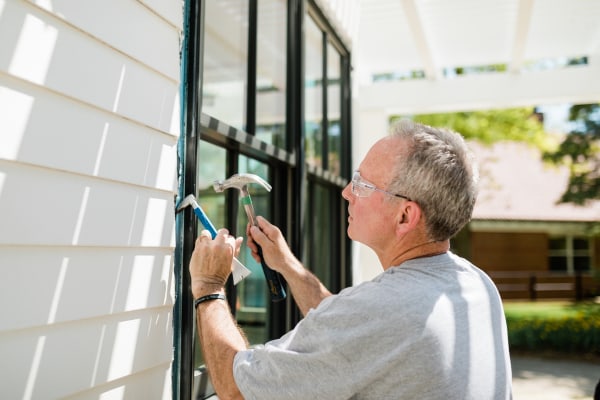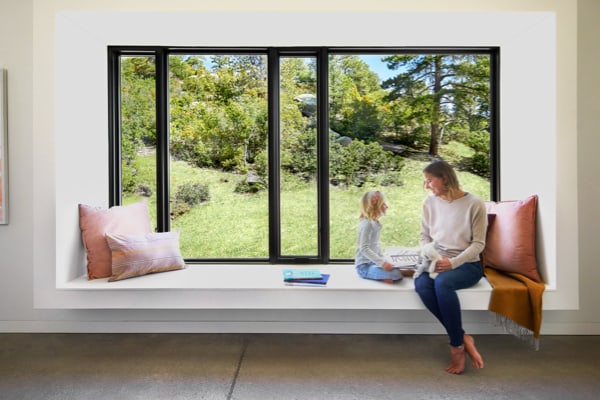Residential Energy Credits for Doors and Windows
Posted
on March 1, 2023

Simple home improvements like energy efficient windows and doors from Pella can directly save you money through lower energy bills. While lower energy bills are great on their own, these upgrades may also qualify you for energy tax credits that can save you even more. Recent changes to tax law have expanded potential saving opportunities for homeowners, making this a great time to update your home. Here’s what you need to know to take advantage of these new residential energy credits.

The Energy Efficient Home Improvement Tax Credit
The Inflation Reduction Act of 2022 extended the Energy Efficient Home Improvement Credit (formerly known as the Nonbusiness Energy Property Credit). For homeowners, this means that energy-saving and energy efficient door and window replacements made in the year 2022 and beyond may qualify for tax credits.

Tax Credits for Window and Door Upgrades in 2022
The Nonbusiness Energy Property Credit originally expired at the end of 2021. With the passing of the Inflation Reduction Act, these original guidelines were extended through 2022. For eligible ENERGY STAR products purchased and installed during the year 2022, a homeowner may claim up to 10% of the cost of new windows, doors or skylights with a maximum lifetime claim of up to $500 (lifetime maximum). However, windows can only account for a maximum of $200 from this amount. These claims do not include installation costs.
It is not necessary to have replaced all windows, doors or skylights in the home to be eligible for these credits. Additionally, new window installations where no window was previously installed also qualify. This situation may apply to you if you added onto your home during the year.
Tax Credits for Window and Door Upgrades in 2023 and Beyond
The Energy Efficient Home Improvement Credit expands the guidelines under which you can claim an energy tax credit for door and window improvements. These credits apply for all eligible products purchased and installed between January 1, 2023 and December 31, 2032.
- For windows and skylights, you may claim 30% of the project cost up to a maximum of $600 (annual maximum).
- For doors, you may claim 30% of the project cost up to a maximum of $500 (lifetime maximum) with the further stipulation that there is a maximum of $250 per door.
As in previous years, these credits apply to product purchases only and do not include the cost of installation. In order to qualify for the Energy Efficient Home Improvement Tax Credit, several criteria must be met including:
- The home must be in the United States.
- The improvements must be to an existing home.
- The upgrades must be on the primary home of the claimant.
Based on these criteria, it is important to note that various home types may be eligible for these credits, including houseboats, mobile and manufactured homes, condominiums and housing cooperatives.
Annual Limits for Tax Claims
In addition to the limits specified for door and window tax credits, there are additional home improvement tax credit limits should you make additional eligible upgrades to your home. The lifetime limitation has been eliminated, leaving only the annual limitation. The maximum allowable home improvement tax credit for any given year is $3,200. This maximum allows for $1,200 for home envelope improvements such as windows, doors and insulation, while an additional $2,000 can be claimed for products such as heat pumps and biomass stoves.
Residential Energy Credit Requirements
Not all door and window upgrades necessarily qualify for energy tax credits. To be eligible, new products must meet specific ENERGY STAR guidelines. For exterior windows and skylights, this means products must meet ENERGY STAR Most Efficient criteria, while exterior doors must meet specific U-factor and solar heat gain coefficient (SHGC) requirements. Requirements for both doors and windows are based on the climate zone of the installation.
Pella offers a range of energy efficient windows and doors that are certified to meet the requirements set forth by these guidelines. Energy-saving technologies like low-emissivity glass coatings and argon gas insulation between window panes ensure all performance metrics meet or exceed industry standards.
Contact Your Local Pella Branch to Take Advantage of Tax Savings
We understand that even with tax and energy savings, window and door replacements are a big investment decision. That’s why it’s important to work with a company you can trust.
Schedule a no-cost, no-obligation consultation through one of over 200 Pella showrooms located across the country. Your local branch will work with you to find the best products for budget and design tastes.
Schedule a free consultation to find windows and doors for your home.
